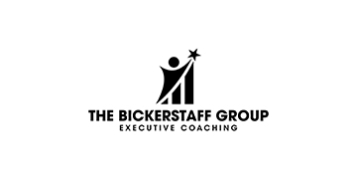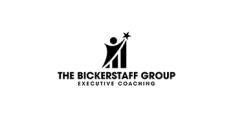
Story To Envision an exciting Future
Story to create an exciting future
It was the early 2000’s when major pharmaceutical companies were in fierce competition for drug development and approval. The Bristol-Myers Squibb (BMS) Company located in Princeton, New Jersey had the insight to appoint a visionary President of Research in combination with a creative Chief Information Officer (CIO). Both saw managing knowledge smartly as the key to future success. Hence, they created a new role as Chief Knowledge Officer (CKO).
At the time, I was a director and one of the leaders in KPMG’s Consulting’s Knowledge Management Practice where I led key knowledge engagements with numerous clients such as the US Department of State and Microsoft.
I stepped into this new role with great excitement. A staff of over 100 Librarian professionals reported to me. I was delighted. I thought if anyone knew what knowledge was needed or where to find it, it would be this team. They wisely commissioned IBM to do research and interviews to create a 3-year Knowledge Management Strategy. That 35-page document was dropped into my lap.
I asked my Leadership Team of 6-7 individuals what were their plans and next steps. In unison, they said they planned to send this document onto the President and CIO to read and then discuss. I thought to myself, fat chance that they will do so.
It actually was a terrific document and quite visionary. After a number of team meetings, I said to the Team, “What if we took all the great ideas in this document and put them in a story of the future format? We would assume most of the ideas worked.” They looked at me like I was from Mars. They said, “We can’t do that.” I asked if they helped to write the report and they said yes. I then said, “If you can’t write that story, who can?” They were still perplexed and not convinced.
I went ahead and set up a meeting with the President and CIO six weeks out. I reconvened the Leadership Team and ask the question of how we could prepare. One brave member spoke up and said, “Maybe we should think about this story idea”. From there, we were off and running with creativity and bringing these ideas to life. It was a lot of fun.
Collectively, we created a three-page abstract article titled, “Bristol-Myers Squibb Named Top Ranked Global Pharmaceutical Company.” It was 2001 and the story was written for 2003, two years out. It had one foot in the present and another in the future, making the ideas plausible and attainable.
We guided the reader around the company and described how managing knowledge smartly made a difference. Topics included: Managing Intellectual Assets Attracts Top BMS Alliances–Blockbuster Drugs Follow; Knowledge Desktops Become Portals for Genomics R & D; BMS Leverages Knowledge Capital to Meet Business Goals: and concluded with KM Innovations Got BMS Wide Recognition. In the latter, we had many requests for site visits. When we went into the Labs we changed real names to fictious ones. When completed, we placed the abstract in the Financial Times because the President was British and from the UK. His photo appeared on the front page. The most difficult part was to find the correct ink to match that of the Financial Times.
The time arrived for our meeting with the President and CIO. Everyone was extremely nervous. They were given this abstract to read an article about IBM’s Strategy document. They were encouraged to read the abstract.
The head of the librarians, the CIO and I walked nervously into the President’s office. He asked us to sit down and proceeded to share his story. He took both documents with him to a Board Meeting. Apparently, he sometimes gets bored. He began to read the abstract and thought to himself as he saw his photo, “I don’t remember this interview.” As he read on, he saw the 2003 date and realized this abstract was painting a picture of possibilities for the company’s future. He got so excited that he wanted to share the abstract with all board members. He contained himself.
He then looked at us and said, “I now know what Knowledge Management is and can do for us. You have my complete support. I want 22 copies of this to be distributed to BMS leaders. I will connect with each and see that they meet with you and your team to make these ideas a reality. And Melinda, I now want you on my Executive Team.” A huge success.
As we walked away from the meeting, the head of the library said, “Holy smokes! This means that all of our roles and functions will be completely different.” To that end, she and her team moved quickly to create another future story about their own evolution and transformation. Their story was placed in The Knowledge Management Review for 2005 and is titled, “Transformation of a Corporate Research Library: Information Providers to Knowledge Cartographers!”
Both stories served as the strategic plan for the next three years. The power of story became infectious and was implemented in numerous settings. These included the fast adoption of E-Lab Notebooks for the scientists; communicating the positive aspects of a corporate-wide audit; the sped up the development of
critical dugs and reducing costs; getting more drugs approved in an 18-month period than ever before; developing a Lessons Learned repository with stories to share knowledge; and assisting in the smooth integration of DuPont Pharmaceuticals into the BMS family.
This work has been featured in several publications inluding: Future Story Chapter in Steve Denning’s, The Leader’s Guide to Storytelling: Mastering the Art and Discipline of Business Narrative; Work Stories by Madelyn Blair; Beyond E-Learning by Marc Rosenberg; Beyond the Deal by Hubert Saint-Onge and Jay Chatzkel; and Wake Me Up When the Data is Over: How Organizations Use Stories to Drive Results by Lori Silverman.
Finally, an interview titled,” The Recontour Extraordinaire Real-World Storyteller” was conducted in 2006 for The KM Pro Journal. This interview further describes the scope and impact of this work.
Click on the titles below to see booklets of the articles mentioned in this story.

